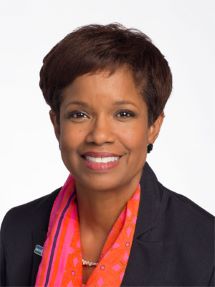Five Tips for Raising Children Who Celebrate Diversity
America truly is a melting pot of many cultures, and our society’s diversity is what makes us unique, strong and vibrant. No matter what race people are or what religion or cultural beliefs they profess, in the end, we are all Americans.

However, when misunderstandings or suspicion cause people to fear others who they consider to be “different,” it leads to the kind of tension and friction we see too often today across our country.
As parents, it is our obligation and responsibility to instill in our children a healthy attitude of acceptance and tolerance for everyone. When kids have a better understanding of other cultures, they are less likely to develop harmful, hurtful prejudices and are more likely to develop positive relationships with others.
How can you help your children to be more culturally inclusive and culturally sensitive? Here are a few tips to get started!
1. Be open. Make a point to talk to your children about other cultures and how and why they are different from and similar to your own. You may be surprised by how much your kids already know about other cultures. Define what "cultural acceptance" means and have your kids do some research on the topic. Then discuss what they learned during dinner. You also can watch television shows or read articles or books about different cultures and talk about them with your children. The key here is to help your children gain a better understanding of other cultures through open, honest conversations where they can ask questions and freely express what they think.
2. Be honest. If parents want their children to truly have a better understanding of other cultures, they must be honest about any biases or prejudices they have. Exploring with your kids how hurtful cultural biases and prejudices can originate and grow over time, and how becoming better informed can counter them, goes a long way toward helping children develop healthier attitudes about diversity and acceptance.
3. Be brave. Parents who practice and model cultural sensitivity and inclusion are more likely to have children who value these competencies. One way to do this is by expanding your own knowledge of different cultures so you can teach your children to accept others who don’t look, act or talk like them. You also can look for opportunities to do community service projects with your kids that involve meeting and interacting with people from other cultures. (Studies show that children who are more involved in their communities have more friends and do better in school.)
4. Be proud. Unfortunately, many children don’t know much about their cultural background. Working with your children to explore your family’s cultural heritage may lead to connections with other cultures while developing a sense pride in your own traditions and ethnic identity.
5. Be forgiving. Oftentimes, people misjudge or misunderstand a person or a group of persons simply because they don’t know anything about them as individuals. These situations of “cultural ignorance” can provide excellent teaching moments for you and your children. For example, I was in a grocery store shopping when a young child pointed at me and said, “Look Mommy! She's black!” The boy’s mother began to apologize to me, but I stopped her in mid-sentence and introduced myself. She seemed very surprised by my response. Then I turned to her son, who was smiling at me as he hid behind his mom. I smiled back and said, “Hello there! My name is Bridget. And who are you?” Sometimes, making the first move to be friendly and kind to others is the best way to head off uncomfortable situations and set a positive example for your kids.
We can’t solve all the problems and social ills that plague our world. But teaching our kids to be open to, accepting of and knowledgeable about other cultures and their people is the first step toward giving us all hope for the future.
Author Bryan Smith offers advice to guide your diversity and inclusion discussions in his latest storybook, Diversity is Key! Downloadable activities and posters are also available here.
New on the Blog
Understanding Empathy and Autism (Expert Article)
Many people believe that autistic individuals lack empathy. This is not true. The reason this m...
Rethinking Work-Life Balance
Work-life balance. What if it’s not what we think it is? I used to think it meant schoolw...
A Matrix for Measuring Success
The Success Nebulous I am always fascinated by the different ways families define and mea...
5 Ways School Counselors, Teachers, and Caregivers Can Help Calm Students’ Anxieties
Most of us can remember feeling dread in the moments before taking a test, and the fears, self-...
KEEPERS: Seven Tips for Strengthening Relationships with Students
When it comes to any type of counseling, the strength of the therapeutic relationship is the number...
Teaching Kids How to Be a Great Friend and Have Great Friends
“In order to get a friend, you have to be a friend. Be ready to be a friend.” This insig...




